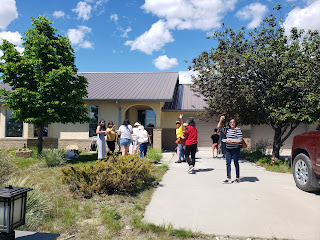Needle-and-thread grass is native to the western third of the United States and is particularly suited to semi-arid regions. This particular bunchgrass thrives in regions receiving 7-16 inches of precipitation annually. Moreover, needle-and-thread grass is not particularly finicky about elevation. You may find it anywhere between 1000 and 8500 feet and you will find it establishing early in areas of disturbed ground.
The kids in my hometown of East
Helena, Montana, called needle-and thread grass “spear grass.” Once the spears began curing under the
summer sun, my friends and I would pluck the miniature weapons from the tufts
of grass and ambush each other.
As a weapon, the grass spears proved
surprisingly effective. A proper throw saw
them readily sticking into clothing. At
close range, the sharp seedheads would penetrate and stick in open skin.
On a drive along our country
road, I suddenly announced: “I need to show you something, Desiree.” I
stopped the car and dashed out to grab three spears from a swath of
needle-and-thread grass wavering along the berm of the roadway. Once back inside the car, I threw the spears
at Desiree’s legs. Two stuck to the
fabric of her jeans.
“Oh, wow!” Desiree exclaimed.
“Spear grass,” I told her. “It’s good stuff.”
Spear Grass
Desiree “Speared”
—Mitchell Hegman








.jpg)
.jpg)
.jpg)
.jpg)
.jpg)












.jpg)
.jpg)














